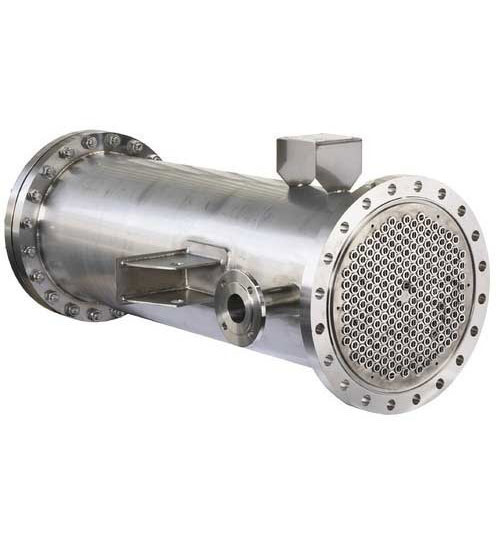Our product range includes a wide range of Heat Exchangers and Oil Coolers.

Product Details :
We offer premium range of Heat Exchangers to our customers in diverse specifications. This range is designed at our end.
Features:
- High strength
- Premium quality
A heat exchanger is a system used to transfer heat between two or more fluids. Heat exchangers are used in both cooling and heating processes. The fluids may be separated by a solid wall to prevent mixing or they may be in direct contact. They are widely used in space heating, refrigeration, air conditioning, power stations, chemical plants, petrochemical plants, petroleum refineries, natural-gas processing, and sewage treatment. The classic example of a heat exchanger is found in an internal combustion engine in which a circulating fluid known as engine coolant flows through radiator coils and air flows past the coils, which cools the coolant and heats the incoming air. Another example is the heat sink, which is a passive heat exchanger that transfers the heat generated by an electronic or a mechanical device to a fluid medium, often air or a liquid coolant.
How to make a heat exchanger more efficient
Temperature differential - As discussed in point 3 (temperature cross-over) the difference between the hot fluid and coolant is very important when designing a heat exchanger. The coolant always needs to be at a lower temperature than the hot fluid. Lower coolant temperatures will take more heat out of the hot fluid than warmer coolant temperatures. If you had a glass of drinking water at room temperature for example, it is much more effective to cool it down using ice rather than just cool water, the same principle applies to heat exchangers.
Flow rate - Another important factor is the flows of the fluids in both the primary and the secondary side of the heat exchanger. A greater flow rate will increase the capability of the exchanger to transfer the heat, but a greater flow rate also means greater mass, which can make it more difficult for the energy to be removed as well as increasing velocity and pressure loss.
Installation - The heat exchanger should always be installed based on a manufacturers' guidelines. Generally speaking the most efficient way to install a heat exchanger is with the fluids flowing in a counter-current arrangement (so if the coolant is travelling left to right, the hot fluid travels right to left) and for shell and tube heat exchangers the coolant should enter at the lowest inlet position to ensure that the heat exchanger is always full of water. For air cooled heat exchangers it is important to consider the air flow when installing a cooler, any part of the core which is blocked will compromise cooling capacity.
